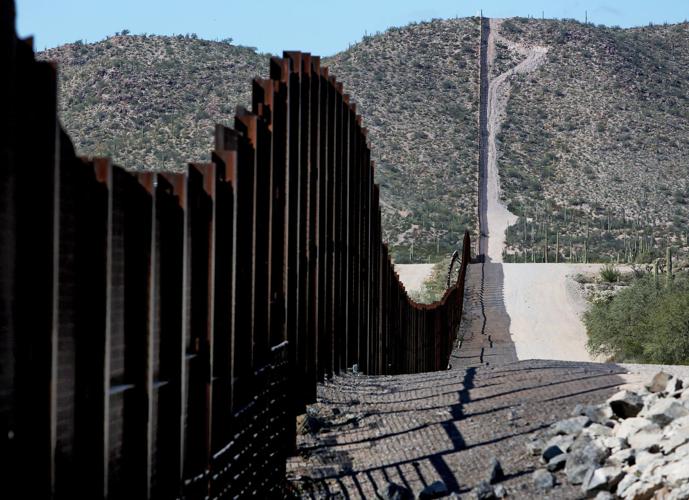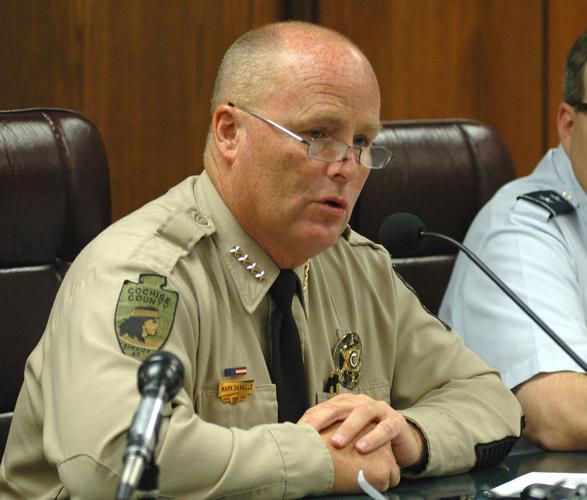PHOENIX — With nowhere near enough money raised to build the promised fence, a special border security panel voted Monday to instead give most of the funds to one of its own.
Without dissent, the members of the Joint Border Security Advisory Committee allocated $219,211.87 to Cochise County Sheriff Mark Dannels to use for equipment he said will help his agency’s efforts to fight border crime. That includes high-tech binoculars, GPS tracking equipment and some “forward-looking radar” designed to help spot smugglers in the dark of night.
The decision comes four years after lawmakers, with great fanfare, announced plans to solicit donations nationwide to have Arizona build its own fence on private property because of the failure of the federal government to secure the border. Backers hoped to raise at least $50 million.
But donations at last count were only around $265,000. So the committee, which consists of law enforcement officials and legislators, opted to ask border sheriffs for proposals to start spending the cash.
In the end, only Dannels made a request.
He detailed for committee members the efforts already underway in the Southeastern Arizona county, including linking together communications systems so that all agencies in the area are aware of what others are doing. And he said 21 rural schools have been given radios to immediately notify his office if there are problems.
What he intends to buy, Dannels said, will supplement the work his deputies can do.
“This is equipment that they can use in darkness,” he said, with deputies watching from staging points. “And then it can help direct our teams in to grab the smugglers and the illegal activity.”
The website set up to solicit donations spells out that the funds will be used “for the construction and maintenance of the border fence.”
But Sen. Steve Smith, R-Maricopa, who helped craft the original legislation, said he sees no problem in financing the equipment purchases.
He pointed out that it also allows for construction of a “virtual fence.” And he said this qualifies.
“Virtual is technology,” he said.
“It’s not one piece of technology, it’s multiple pieces of technology,” Smith continued. “It could be binoculars, it could be thermal imaging.”
And Smith said the proposal from Dannels has all those elements.
Pinal County Sheriff Paul Babeu, another member of the panel, said technology may be the answer. He detailed how he has used other funds to buy everything from high-powered firearms to a helicopter, all of which he said led to the “largest drug bust in Arizona history.”
He called Dannels “a patriot on the border.”
Much of Monday’s meeting dealt with frustration by committee members at what they see as the inaction by the federal government to secure the border, a failure Smith said covers both Democrat and Republican administrations in Washington.
Customs and Border Protection says that 318 miles of the 389-mile long Arizona border is protected with either a pedestrian fence or a vehicle barrier. The latter actually allows pedestrians to walk through.
Babeu said the federal government ought to be interested in border security — and not simply because smugglers bring drugs and people into this country.
“The point that hasn’t been lost on this committee is the national security threat that’s far more important than these issues,” he said. Babeu told other committee members about incidents where dozens of smugglers have been able to get away from his deputies.
“People with military training, deliberate plans and all the financial resources at their disposal, it stands to reason that they can get away,” he said. “And they can get in here very easily.”
House Speaker David Gowan, R-Sierra Vista, was more specific.
“We have ISIS crossing over,” he said, referring to Islamic State militants.
“Make no bones about it, that border is porous,” Gowan continued. “And every time that we step up and try to do something, the federal government wants to sue us.”
Rep. Mark Finchem, R-Oro Valley, saw other threats.
“It’s not supposition, it is a fact that we are witnessing the importation of slavery,” he said.
Finchem also defended the decision to use the money for technology with a reference to the Maginot Line, a set of fortifications built by the French in the 1930s to prevent an attack by Germany. It did not work, as Germany swept through when it invaded France in World War II.
“A static fence ... it’s been proven from military history to not work,” Finchem said.
“You just go over it or around it,” he continued. “So I’m very pleased we’re looking at defining ‘fence’ differently.”
The panel also voted to require Dannels to report back to the committee in a year to detail how he spent the money.






